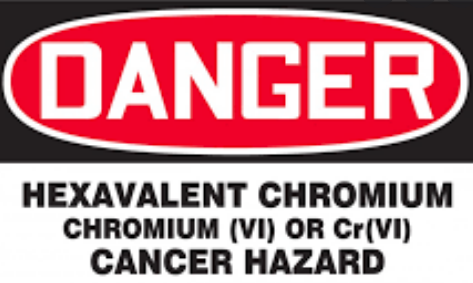Early Results Show no Signs of Contamination Following Huron River Hexavalent Chromium Spill
by Kyle Davidson
Following reports of a hexavalent chromium spill in the Huron River on Monday, the Michigan Department of Environment, Great Lakes and Energy (EGLE) has begun testing at multiple sites in the river system.
Hexavalent chromium is a known carcinogen and can cause multiple negative health effects through contact with skin, or when inhaled or ingested.
Results from nine surface water samples taken on Wednesday found no detectable levels of hexavalent chromium, according to EGLE. Two other samples taken on Tuesday also found no presence of the chemical.
While these results have not detected the contaminant, EGLE is expanding its monitoring efforts. On Thursday, the department took samples at 29 locations along the Huron River system.
According to EGLE, the spill originated last weekend when Tribar Manufacturing in Wixom released liquid containing 5% hexavalent chromium into the sewer system. The Wixom wastewater treatment facility connected to the system discharges into Norton Creek, which flows into the Huron River.
EGLE says investigators are currently testing sewage inside the treatment plant to determine if the contamination is bound to the sludge inside the facility.
Crews will also test for contaminants at Barton Pond, where the city of Ann Arbor draws drinking water. While models show the contaminant would take several weeks at minimum to reach the city’s water intake, samples are being taken as a precaution.
EGLE staff also inspected the Tribar facility on Wednesday, as part of an investigation to determine the cause, volume and a timeline for the spill.
The Michigan Department of Health and Human Services (DHHS) recommends people and pets avoid contact with the Huron River water between North Wixom road in Oakland County and Kensington road in Livingston County as testing continues.
This includes Norton Creek, downstream from the treatment plant, Hubbell Pond in Milford — also known as Mill Pond — and Kent Lake, which is accessible through Kensington Metropark.
DHHS advises against swimming, wading, playing or drinking water from these areas. It also advises against using Huron River water to water lawns or plants.
Officials also stressed that properly constructed and permitted drinking water wells are unlikely to be contaminated by chromium from the river, saying it is unlikely the substance will enter the groundwater.
Residents with questions about hexavalent chromium exposure and its potential health effects can call the MI Toxic Hotline at 800-648-6942 from 8 a.m. to 5 p.m. Monday through Friday. Hotline hours will be extended through this weekend from 8 a.m. to 5 p.m.
There are also dedicated web pages from the Oakland and Washtenaw county health departments, and the City of Ann Arbor.
EGLE’s Environmental Assistance Center, also acts as a single point of entry into the agency’s programs: EGLE-Assist@Michigan.gov or 800-662-9278.


Comments are closed, but trackbacks and pingbacks are open.